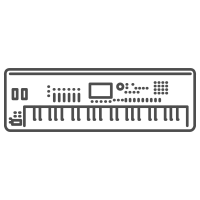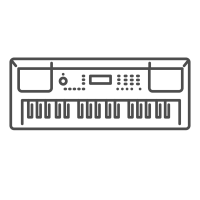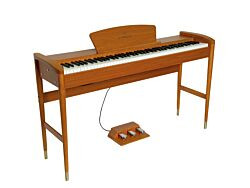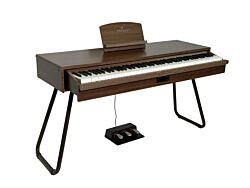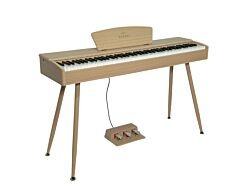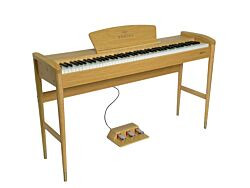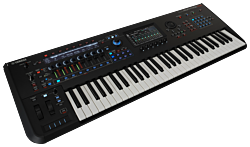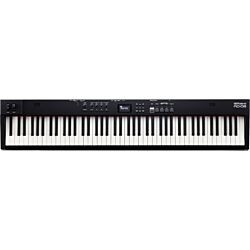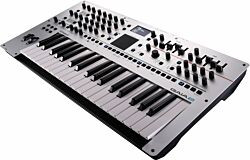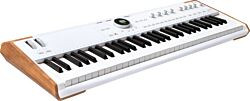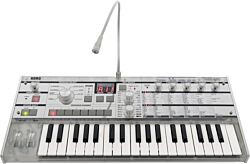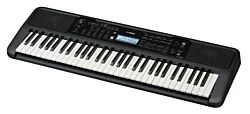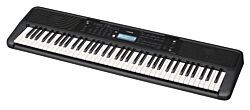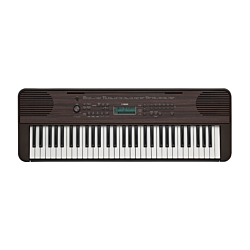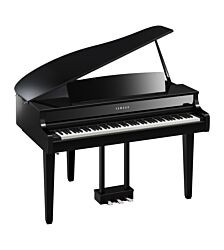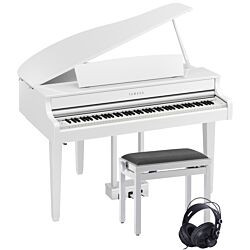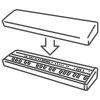It can sometimes be difficult to distinguish between various keyboard instruments. There are many categories for these - Workstation synthesizers, arranger keyboards, analog and digital synthesizers. But what exactly is the difference? If this is a question that you, as well as many others, can not find an answer to, you can read this article which focuses on the origin of the synthesizer, as well as its development over time.
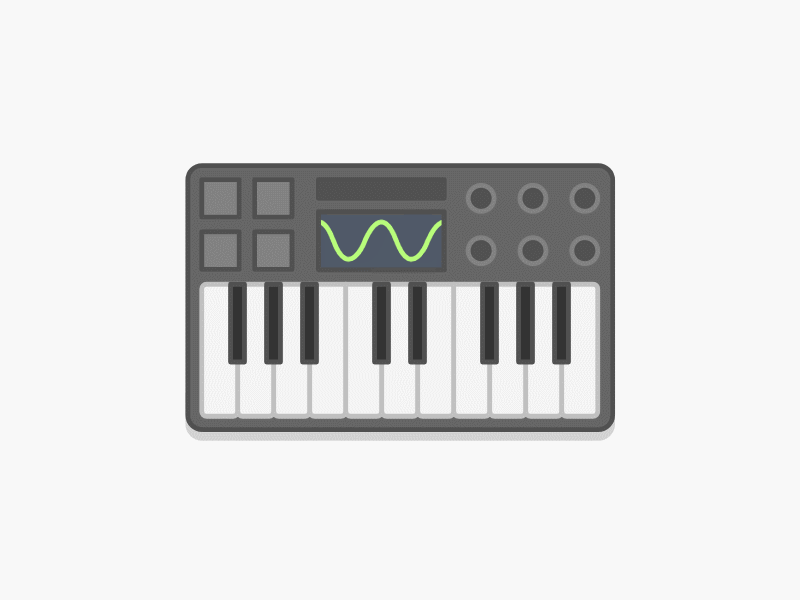
Workstation Synthesizer
The term Workstation Synthesizer involves a musical instrument that i.a. contains:
- A sound module - gives you access to the many different sounds
A sequencer - allows you to record, edit and play music, directly from the instrument - Keys - necessary to control the synthesizer
The concept of combining a sequencer with a synthesizer dates back to the 1970s, when microprocessors, mini-computers, digital synthesizers and a controllable keyboard instrument were combined into one instrument.
The image below shows what one of the first Workstation Synthesizers looked like. It is a Fairlight CMI Series II (1980), where you see a drum rhythm being created in a sequencer.

Of course, technology has evolved quite a bit since the 70s, but practically the same elements are still the cornerstones of a modern Workstation Synthesizer. One of the largest models of these Workstation Synthesizers is the Roland Fantom series. With a Fantom, there is almost nothing you can not do. It is a highly advanced piece of tool that provides ample opportunity to make your own production of synthesizer-based music.

Arranger Keyboard
For the past 20 years, the arranger keyboard has been on the market and it has only evolved into more and more advanced instruments.
The principle of an arranger keyboard is its ability for automatic accompaniment. You can typically control chords and the accompaniment itself in one hand while playing a melody in the other. Various buttons have been dedicated to control musical variations, intros, fills, outro m.m. One can in many ways call an arranger keyboard a musical multi-tool that replaces complete bands with a single keyboard. Therefore, the instrument is particularly suitable for one-man bands, but can also easily be used in a band context, due to its many different incorporated sounds.
If you are a songwriter, an arranger keyboard can also be a useful tool in the development process. That way you can hear your song in different genres and with different instruments.
An example of an arranger keyboard could be this Yamaha PSR-SX900.
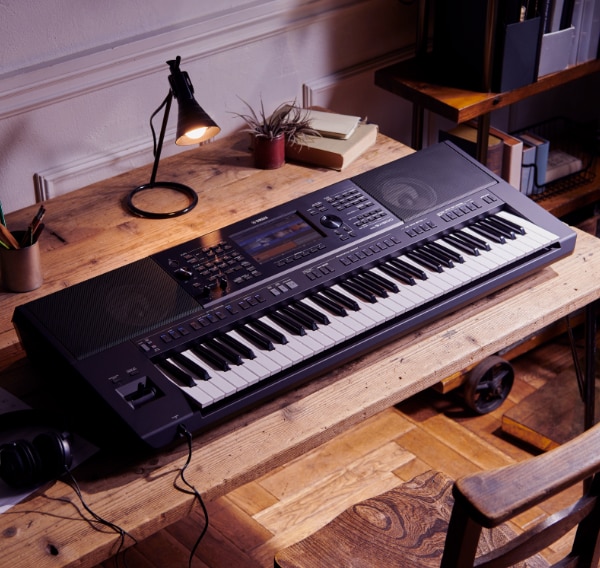
Analoge synthesizers
In short, an analog synthesizer works in such a way that you generate sound with electricity via analog circuits and signals. The first description of a so-called "synthetic harmonizer" powered by electricity dates back to 1906. However, it was not until between 1960-1970 that the 'proper' synthesizer was to be found. Here, technologies from analog computers and laboratory test equipment were used. A synthesizer was then built in different individual modules:
- Oscillators
- Filters
- Amplifiers
You could use them to make different circuits through the modules, thereby generating new electronic sounds. By controlling the voltage in the circuit, one could change the frequency in the oscillator and in the filters, as well as gain in the amplifier. Later came effect modules, such as
- Envelope generators that control how a sound changes over time
- Low-frequency oscillators (LFOs) that can generate a rythm-like feel with sounds below 20 Hz
- Ring modulator that connects two signals to create two completely new frequencies
On more advanced analog synthesizers, they also had effect modules such as reverb, and furthermore, some also had tools such as sequencers and mixers - with the latter, one begins to be able to recognize characteristics from a Workstation Synthesizer.
The picture below shows Hans Zimmer in 1970 with his Moog Modular Synthesizer, and as you can probably see, the technology has developed tremendously in the last 50 years.

He has a whole wall here filled with various modules, which are connected to each other with lots of patch cables.
Today, you can still get analog synthesizers. A good example of this is Dave Smith's Sequential series.

The picture shows a Sequential Prophet-5. It is in every way a highly advanced and professional instrument that contains all the effects, filters and oscillators known from original analog module synthesizers in a compact and vintage design.
Digitale synthesizers
In a digital synthesizer, in contrast to the analog synthesizer, digital signals are used. In 1973, Yamaha got the licens to the frequency modulation synthesis (FM synthesis) algorithms.
At the commercial level, Yamaha released one of the world's first digital synthesizers in 1980, based on their FM synthesis. This was the Yamaha GS-1:

The idea of the instrument here was to produce a music-minded synthesizer that is easily accessible to the ordinary musician, instead of a highly advanced synthesizer that requires great understanding to maneuver. In fact, one can hear this Yamaha GS-1 in i.a. TOTO's songs Africa and Rosanna.
Another early digital synthesizer was the aforementioned Fairlight CMI, introduced in 1979. So in that way, the digital synthesizer and the Workstation Synthesizer have gone hand in hand, as the basis of the Workstation synthesizer lies in the digital synthesizer.

Despite the powerful FM synthesis, there was still great interest in the analog synthesizer. And combined with the development of the computer, they now made the virtual analog synthesizer (VA synthesizer). Here, digital technology is used to simulate the analog synthesizer. Examples of this type are:
- Nord Lead (1994)
- Roland V-synth (2003)
- Roland JP-8000 (1996)
- Yamaha Reface CS (2015)
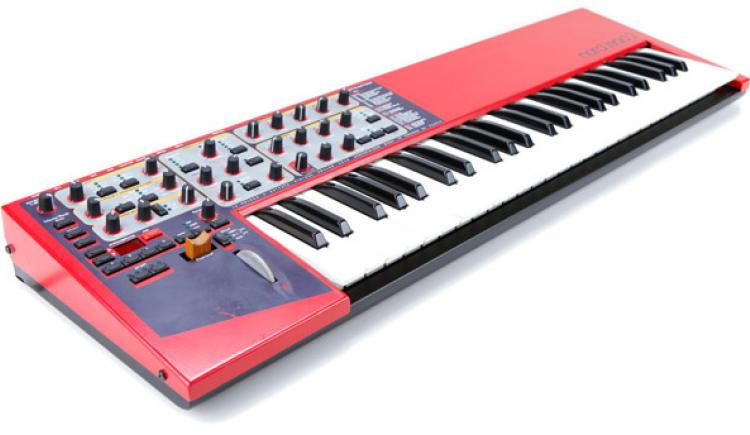
Synthesizeren
Quite simply, the word synthesizer comes from synthetic, which broadly means things are composed of multiple parts, often with the implication that they are artificial. In other words, you collect and combine a number of properties that together create the well-known synthesizer sound.
From the first idea of the analog synthesizer in 1906 and up to 2021, where Workstation Synthesizers like Roland's Fantom 8 can do almost the same thing as one can perform in a professional music studio, a lot has clearly happened - and who knows where the technology brings us to another 100 years.


